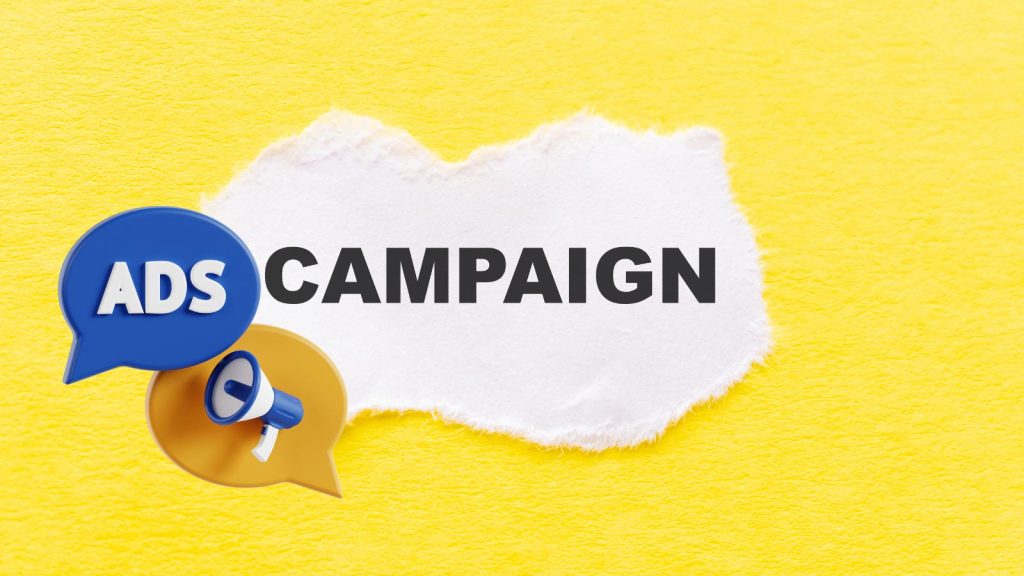With several businesses embracing digital marketing, competition for online leads will only get tougher by the day. With that said, your online ad campaigns may not reach a large audience without proper ad optimization.
Leverage the best hacks to maximize your return on investment. Here are a few you can consider to optimize your ads effectively.
Table of Contents
Understanding Your Target Audience
Understanding your target audience is crucial for optimizing your marketing campaigns for successful results.
By conducting thorough market research and defining buyer personas, you can tailor your campaigns to resonate with the right people.
Conduct Market Research
Before you can optimize your campaigns, it’s essential to gain insights into your target market. Market research helps you understand the needs, preferences, and behaviors of your audience.
Once you have gathered sufficient market research data, it’s time to create buyer personas. Buyer personas are fictional representations of your ideal customers.
They help you understand your target audience on a deeper level and guide your ad campaign optimization efforts.
Here’s how to create effective buyer personas:
- Demographics: Define the age, gender, location, education, occupation, and income level of your ideal customers. These demographic details provide a foundation for understanding who they are.
- Psychographics: Dive into the psychographic aspects of your audience, such as their interests, hobbies, values, and lifestyle choices. This information helps tailor your ad campaigns to align with their motivations and aspirations.
- Challenges and Pain Points: Identify the challenges and pain points your target audience faces. Determine what obstacles they need to overcome and how your products or services can provide solutions.
- Goals and Motivations: Understand the goals and motivations of your audience. What drives them to seek out products or services in your industry? Tailoring your messaging to align with their aspirations can significantly improve ad campaign performance.

1. Choose the Right Platforms
To run a successful digital advertisement, it’s important to choose the right ad platforms that align with your goals and target audience.
Research Different Ad Platforms
Before diving into optimization, it is essential to research and explore different ad platforms available to you. Each platform has its unique features, targeting options, and audience reach.
Here are a few popular ad platforms you may want to consider:
- Google Ads: One of the most popular advertising platforms, Google Ads allows you to display ads on search engine result pages, websites, and mobile apps. It offers various ad formats and targeting options to help you reach your desired audience.
- Bing Ads: The Bing platform is similar to Google’s with being displayed on the Bing network and on Siri voice search.
- Facebook Ads: With over two billion monthly active users, Facebook Ads provides extensive targeting capabilities based on demographics, interests, behaviors, and more. It is an effective platform for engaging with a wide range of audiences.
- Instagram Ads: As part of the Facebook advertising ecosystem, Instagram allows you to create visually appealing ads to reach a younger and highly engaged audience. It is particularly effective for brands that can leverage visual content.
- LinkedIn Ads: If your target audience consists of professionals and businesses, LinkedIn Ads can be a valuable platform. It offers precise targeting options based on job titles, industries, company size, and more.
- TwitterX Ads: Twitter X Ads allow you to promote your content and engage with users in real-time. With the ability to target specific keywords, hashtags, and user handles, it can be an excellent platform for increasing brand awareness and driving conversation. Today Twitter X ads are cheaper than ever before. I’ve done several ads on X with success this month alone.
By researching and comparing different platforms, you can identify the ones that best align with your objectives and target audience demographics.
2. Consider Your Target Audience’s Online Behavior
Understanding your target audience’s online behavior is essential for optimizing your ads. Consider the following factors when selecting ad platforms:
- Online Habits: Where does your target audience spend most of their time online? Do they prefer social media platforms, search engines, or niche websites? Analyzing their online habits will help you determine the most suitable platforms to reach and engage with them effectively.
- Device Preferences: Are your target audience primarily mobile users, desktop users, or a combination of both? Different ad platforms may perform better depending on their device preferences. For example, social media platforms like Instagram and Facebook may be more effective for mobile users, while search engine ads might cater well to desktop users.
- Engagement Patterns: How do your target audience members interact with online ads? Do they click on ads, watch videos, or prefer engaging with organic content? Understanding their preferences will enable you to choose ad formats and platforms that resonate with their behavior, maximizing your campaign’s potential.
By considering your target audience’s online behavior, you can strategically select ad platforms that are most likely to reach and engage with them effectively.
3. Craft Compelling Ad Copy
In the world of digital advertising, crafting compelling ad copy is crucial for capturing your audience’s attention and driving click-through rates.
By using attention-grabbing headlines and highlighting unique selling points, you can optimize your ad purchase for maximum results.
Use Attention-Grabbing Headlines
The headline of your ad is the first thing users see, and it plays a significant role in whether they choose to engage with your content or simply scroll past it. To create attention-grabbing headlines, consider the following tips:
- Be concise and clear: Use powerful and succinct language to convey the value proposition of your product or service.
- Incorporate numbers and statistics: Quantifiable data instantly attracts attention and adds credibility to your claims.
- Pose a compelling question: Engage your audience by asking a thought-provoking question that piques their curiosity.
- Use strong action verbs: Activate your audience by using action-oriented language that encourages them to take a specific action.
Remember, the goal is to stand out from the competition and make your ad copy irresistible to the target audience.

4. Highlight Unique Selling Points
Once you’ve captured your audience’s attention with a compelling headline, it’s essential to highlight your unique selling points (USPs).
Your USPs are what differentiate your product or service from others in the market. Here’s how you can effectively showcase them:
- Identify your USPs: Determine what makes your product or service special, such as exclusive features, competitive pricing, or exceptional customer service.
- Emphasize benefits: Communicate the benefits customers will experience by choosing your product or service. Focus on how it solves their pain points or fulfills their desires.
- Use specific details: Incorporate specific numbers, testimonials, or case studies to add credibility and demonstrate the value of your USPs.
By highlighting your unique selling points, you create a compelling reason for users to engage with your ad and convert it into customers.
5. Optimize Ad Design and Format
When it comes to running successful advertisements, optimizing your ad design and format is crucial.
By creating eye-catching visuals and testing different ad formats, you can increase the effectiveness of your ads and ultimately drive better results
Use Eye-Catching Visuals
One of the most important aspects of successful marketing is grabbing the viewer’s attention. Eye-catching visuals can make the difference between a user scrolling past your ad and stopping to take a closer look.
- High-Quality Images: Use high-resolution images that are visually appealing and relevant to your product or service. Avoid using low-quality or pixelated images, as they can give a negative impression of your brand.
- Contrasting Colors: Choose colors that stand out and create a contrast between the ad and the surrounding content. This will make your ad more visually striking and help it catch the viewer’s eye.
- Minimalistic Design: Keep your ad design clean and uncluttered. Avoid overcrowding the ad with too much text or unnecessary elements. A simple and focused design will make it easier for viewers to understand your message.
6. Test Different Ad Formats
Another way to optimize your ads is by testing different ad formats.
Not every ad format works equally well for every audience or platform, so it’s important to experiment and find what resonates best with your target audience.
- Static Image Ads: Traditional static image ads are a popular choice and can be effective if designed well. Experiment with different image sizes and placements to find the format that yields the best results.
- Video Ads: Video ads have become increasingly popular and can capture and hold viewers’ attention more effectively. Create engaging videos that highlight your product or service’s key features and benefits.
- Carousel Ads: Carousel ads allow you to showcase multiple images or videos within a single ad. Use this format to tell a story or highlight different aspects of your offering.
- Interactive Ads: Interactive ads encourage user engagement and can greatly enhance the effectiveness of your campaigns. Consider incorporating features like quizzes, games, or surveys to make your ads more interactive and memorable.
7. Implement A/B Testing
A/B testing is a crucial technique to optimize your advertisement and maximize its results.
By testing different ad elements, analyzing the results, and making necessary optimizations, you can improve your overall advertising effectiveness.
Creating Ad Campaigns by Testing Different Ad Elements
When it comes to A/B testing, the first step is to experiment with different ad elements. This includes variables such as headlines, images, call-to-action buttons, ad copy, and even the color scheme used.
By creating multiple variations of your ads and monitoring their performance, you can identify which elements resonate better with your target audience.
To begin, start with one variable at a time, such as testing two different headlines for the same ad. This ensures that you can accurately pinpoint the impact of each specific element on your ad’s performance.
Use tools like Google Ads or Facebook Ads Manager to set up your A/B tests and track the results.
Analyze and Optimize Results
Once you have run your A/B tests and gathered sufficient data, it’s time to analyze the results. Look closely at key metrics such as click-through rates, conversion rates, and cost per acquisition for each ad variation.
Identify patterns and trends from the data to determine which specific elements are influencing the success of your ads. For example, you might find that ads with a specific color scheme have higher click-through rates.
Make data-driven decisions when optimizing your campaigns based on the insights gained from your A/B testing. Implement changes to the underperforming ads and monitor their performance over time.
Remember that optimization is an ongoing process, so it’s essential to regularly test and refine your ads to achieve optimal results.
By implementing A/B testing in your ad campaigns, you can gain valuable insights into what resonates with your audience, allowing you to optimize your ads and achieve better results.
Monitor and Track Ad Performance
To optimize your campaigns for maximum results, monitoring and tracking their performance is crucial.
By utilizing analytics tools and regularly reviewing and adjusting your campaigns, you can ensure that your ads are performing at their best.
Utilize Analytics Tools
Analytics tools provide valuable insights into the performance of your ads. By utilizing these tools, you can gather data and metrics that will help you make informed decisions about your campaigns.
Here are some popular analytics tools to consider:
- Google Analytics: This free tool from Google provides comprehensive website analytics, including data on user behavior, conversions, and traffic sources. By integrating it with your ad campaigns, you can get a holistic view of their performance.
- Facebook Analytics: If you’re running ads on social media like Facebook or Instagram, Facebook Analytics can help you track the effectiveness of your campaigns. It provides data on audience demographics, engagement, and conversions, allowing you to optimize your targeting and messaging.
- Ad platforms’ built-in analytics: Most advertising platforms, such as Google Ads and Facebook Ads Manager, have built-in analytics. These tools provide specific insights into your ad performance, including impressions, clicks, and conversions.
Regularly Review and Adjust Campaigns
Monitoring your ads is not enough; you must also take action based on the insights gained. Regularly reviewing and adjusting your campaigns allows you to optimize their performance and achieve better results.
- Analyze campaign metrics: Review the key metrics provided by your analytics tools, such as click-through rates (CTR), conversion rates, and cost per acquisition (CPA). Identify any underperforming ads or ad sets that are not delivering the desired results.
- Identify areas for improvement: Look for patterns or trends in the data. Are certain targeting options or ad formats performing better than others? Determine what elements of your campaigns can be optimized to increase engagement and conversions.
- Optimize ad creative: Experiment with different ad creatives, messaging, and calls-to-action (CTAs) to see what resonates best with your target audience. A/B testing can help you identify the most effective variations and refine your campaigns accordingly.
- Adjust targeting: Refine your targeting parameters based on the data you’ve gathered. Narrow down your audience to reach those who are most likely to engage with your ads and convert. Consider factors such as demographics, interests, and geographic location.
- Monitor and measure results: After implementing changes, closely monitor the performance of your adjusted campaigns. Continuously track the updated metrics and evaluate whether the adjustments have had a positive impact on your ad performance.
8. Launch Multi-Channel Ads
Today, audiences interact with businesses on multiple fronts; customers may start their journey on one channel only to land on another platform. Therefore, you must consider launching multi-channel ad campaigns to boost your conversion chances.
This strategy fuses different distribution and promo channels. The benefits of creating multi-channel ads include a seamless experience for customers, a wider reach, and saving time.
Studies show converting a lead into a sale takes at least 6 to 8 touch points, so create consistent ads for several platforms to improve visibility.
9. Fine-Tune Your Mobile Ads
Optimizing ads for mobile devices will ensure your campaign reaches customers opportunely. Mobile searches usually indicate a higher buying intent, so offer a seamless experience to increase conversion.
You may want to use purpose-built mobile advertising technology to fine-tune your campaign and generate reports from a single platform.
It would be best to seek help from mobile advertising companies to design a tailored creative in any ad format to suit your marketing goal and enhance your brand outreach.
10. Conduct Better Keyword Research For Great Ad Campaigns
Keywords are the pillar of search engine marketing (SEM). When consumers enter keywords into the search bar, your page may appear depending on content relevance and quality.
Amateur marketers frequently commit the mistake of targeting high-volume keywords without paying attention to other crucial factors.
However, if you do this, the audience may not see your ads even if you outbid competitors. Always double-check your keyword research strategy before launching new ads.
SEMRush, Ahrefs, SerpStat, and Moz Keyword Explorer are important tools for reviewing potential keyword parameters to optimize your ad campaign.
Long Tail Keywords in Ad Campaigns
Consider prioritizing long-tail keywords as they are more cost-effective due to the relatively low volume. When you use the right keywords effectively, they can positively impact your ad campaign result.
Pay attention to your keyword’s cost-per-click (CPC) over time and strike when the opportunity arises.
11. Research Your Direct Competitors
Whether you are creating paid ad campaigns or organic website content, competitor analysis must go hand-in-hand with keyword optimization. Without this, you may create quality content and still lose the bidding war.
Researching direct competitors is essential for businesses lacking solid SEO backgrounds. The last risk you want to take is overpaying for keywords that will only exhaust your marketing budget before driving results.
Rather than going head-to-head with your closest competitors, research their keyword strategy and exploit their loopholes.
You can partner with experienced SEO agencies to get a firm grip on your competitors’ SEO tactics, allowing you to outrank them on search engine results pages.
To Conclude: Successful Ad Campaigns
Optimizing your digital commercials is essential for attracting your potential clients. Hopefully, you’ll consider these tips to achieve success as you create ad campaigns for your small business.
Have you used ads for your small biz recently? I’d love to hear about your experience in the comments below.




